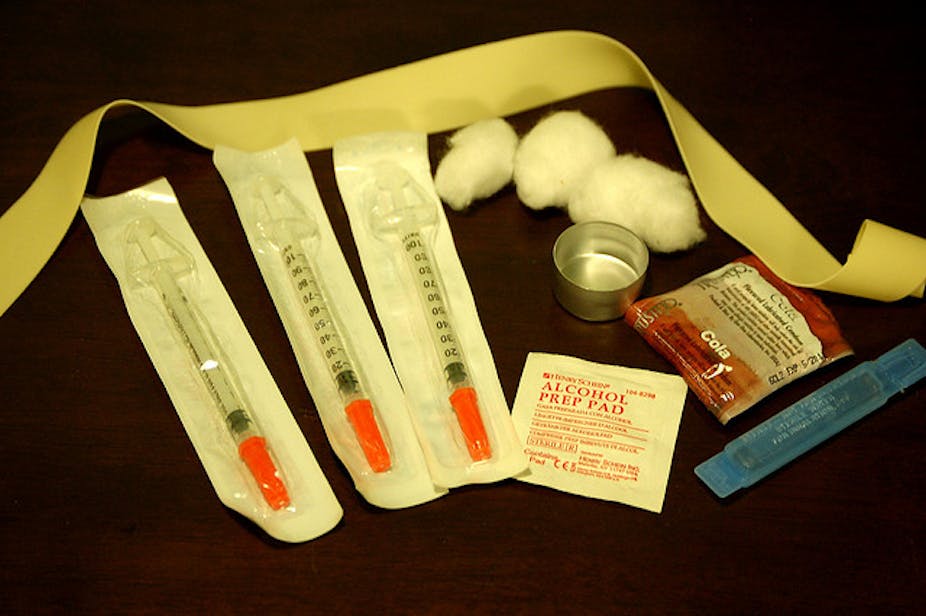Australian governments are spending more on law enforcement against illicit drugs than treatment and prevention, according to a report released today by the National Drug and Alcohol Research Centre.
The report, presented at a symposium in Canberra today, compared state and federal government expenditure between 2002/3 and 2009/10.
While overall spending on illicit drug policy has increased to $1.7 billion in 2009/10 (up from $1.13 billion in 2002/3), it decreased for harm reduction measures such as needle exchange programs, the report found.
“That’s of real concern because Australia has led the way in terms of harm reduction from the mid 1980s and it seems that spending has decreased in that area despite known effectiveness of those programs,” said Alison Ritter, lead study author and specialist in drug policy at the National Drug and Alcohol Research Centre at the University of NSW.
Spending was highest on law enforcement (66%), then treatment (21%), prevention (9%) and harm reduction (2%).
Treatment and harm reduction
At the moment, the $1.7 billon spent on illicit drug policy makes up 0.8% of all government spending, which the researchers said was inadequate when compared to the social, economic and health burdens of illicit drugs.
Professor Ritter said that clinicians have recognised there are lot more people who want and need treatment than are receiving it.
Arresting a drug dealer consumes more resources than activities such as needle syringe programs, which are inexpensive and straightforward, according to Professor Ritter.
State vs federal funding
“It’s interesting when we talk about illicit drug policy, the federal government is often the target for attention from researchers and advocacy groups,” Professor Ritter said.
“But in actual fact, in terms of policy influence, in order for advocacy groups to get bang for their buck they should be talking to state and territory governments probably a lot more than we do.”
Carolyn Day, Associate Professor in addiction medicine at the University of Sydney, said that while the federal government is responsible for funding primary health care, there are specialist services which tend to fall under state responsibilities.
“It can be very frustrating because it’s difficult to know who is responsible for what,” she said.
Uphill battle
Alex Wodak, Emeritus consultant at St Vincent’s Hospital in Darlinghurst, Sydney, said there is minimal evidence that law enforcement is cost-effective.
“If governments were serious about repairing the structural deficits in their budgets and responding effectively to illicit drugs, they would shift spending from drug law enforcement to treatment and harm reduction,” he said.
Despite the high spending on law enforcement measures, Dr Wodak said that illicit drugs are still readily available.
“According to the 2010 Illicit Drugs Reporting System, 92% of drug users said that hydroponic cannabis was easy or very easy to obtain and 87% said that heroin was easy or very easy to obtain.”
Dr Wodak said that governments should include a direct line of spending on illicit drugs.
“It is up to governments to use these new figures, if they are serious about their budget problems and are serious about illicit drugs. Unfortunately, bad policy has been good politics for a long time. This is now starting to change.”


